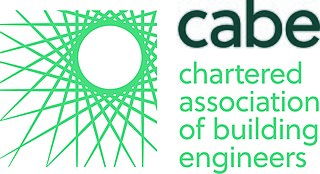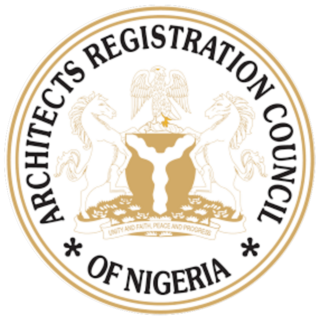Regulation and licensure in engineering is established by various jurisdictions of the world to encourage life, public welfare, safety, well-being, then environment and other interests of the general public and to define the licensure process through which an engineer becomes licensed to practice engineering and to provide professional services and products to the public.

The Royal Institute of British Architects (RIBA) is a professional body for architects primarily in the United Kingdom, but also internationally, founded for the advancement of architecture under its royal charter granted in 1837, three supplemental charters and a new charter granted in 1971.
The architectural technologist, also known as a building technologist, provides technical building design services and is trained in architectural technology, building technical design and construction.

The Architects (Registration) Acts, 1931 to 1938 is the statutory citation for three Acts of the United Kingdom Parliament, namely:
The Board of Architectural Education is no longer appointed. It had been a statutory body in the United Kingdom constituted under section 5 of the Architects (Registration) Act, 1931.
For the purposes of the statutory Board of Architectural Education, the Schools of Architecture were those listed in the second schedule to the Architects (Registration) Act 1931. The 1931 act had required the Board of Architectural Education to be appointed annually by the Architects' Registration Council of the United Kingdom (ARCUK). The board was to be constituted in accordance with the Second Schedule to the Act. This included a list of twenty Schools, from the Liverpool School of Architecture to the School of Architecture of the Architectural Association London.
A building control body is an organisation authorised by the Building Act 1984 to control building work that is subject to the Building Regulations in England and Wales (similar systems are provided in Northern Ireland, and in Scotland where the term 'building standards' is used. Such regulations or standards are also known as the building codes in other parts of the world.
Under an Act passed by the UK Parliament in 1931, there was established an Architects' Registration Council of the United Kingdom (ARCUK), referred to in the Act as "the Council". The constitution of the Council was prescribed by the First Schedule to the Act. The Act made the Council a body corporate by the name Architects' Registration Council of the United Kingdom. It was habitually referred to colloquially by the acronym ARCUK.
"Reform of Architects Registration" was the title of a UK government consultation paper dated 19 July 1994 which was issued by the Department of the Environment. The introduction stated that in October 1993 the Government had announced that the profession and others would be consulted about measures which could be taken to simplify the then arrangements for the registration of architects under the Architects Registration Acts, and that broad agreement on what those measures would be had been reached with the Architects' Registration Council of the United Kingdom (ARCUK) and the Royal Institute of British Architects (RIBA). Eventually, Parliament made certain changes to the Architects Registration Acts which now have effect under the Architects Act 1997.

The Architects Act 1997 is the consolidating Act of the Parliament of the United Kingdom for the keeping and publishing of the statutory Register of Architects by the Architects Registration Board. It has the long title: An Act to consolidate the enactments relating to architects. It consolidated two Acts of the 1930s as later amended both by primary legislation and by Orders in Council implementing the EC directive on architects providing for the recognition of architects qualified in other EC states, and the changes which had been made by Part III of the Housing Grants, Construction and Regeneration Act 1996.

Chartered Association of Building Engineers (CABE) is a professional body for building engineers in the United Kingdom and overseas.
From 1932 there has been a statutory Register of Architects under legislation of the United Kingdom Parliament originally enacted in 1931. The originating Act contained ancillary provisions for entering an architect’s name in the register and removing a name from it which later legislation has amended. The 1931 Act gave it the name “the Register of Registered Architects”, but by an Act of 1938 the name was changed to “the Register of Architects”.
After nearly a century of endeavour and negotiation which had been led by the Royal Institute of British Architects, a statutory Board of Architectural Education was formed under the Architects (Registration) Act 1931. For the purposes of constituting the Board of Architectural Education the Act included a list of Schools of Architecture in the United Kingdom. The statutory Board was abolished in the 1990s, and when the Architects Act 1997 repealed the 1931 Act the statutory list of Schools of Architecture went with it.

A building engineer is recognised as being expert in the use of technology for the design, construction, assessment and maintenance of the built environment. Commercial Building Engineers are concerned with the planning, design, construction, operation, renovation, and maintenance of buildings, as well as with their impacts on the surrounding environment.

The Architects Act 1997 was amended in 2008 by a statutory instrument made by a minister of the United Kingdom government under the European Communities Act 1972. This was the Architects Regulations 2008, which came into force on 20 June 2008. An Explanatory Memorandum was issued with the Regulations and a fuller Explanatory Memorandum presented to Parliament.
In the United Kingdom, the Architects Act 1997 imposes restrictions on the use of the name, style or title "architect" in connection with a business or a professional practice, and for that purpose requires a statutory Register of Architects to be maintained. The Architects Registration Board constituted under the Act is responsible for Architects Registration in the United Kingdom and is required to publish the current version of the Register annually. Every person who is entitled to be registered under the Act has the right to be entered in the register. The act consolidated previous enactments originating with the Architects (Registration) Act 1931 as amended by the Architects Registration Act 1938. It applies to England, Wales, Scotland and Northern Ireland.
Professional requirements for architects vary from place to place, but usually consist of three elements: a university degree or advanced education, a period of internship or training in an office, and examination for registration with a jurisdiction.
Engineering law is the study of how engineering ethics and legal frameworks are adopted to ensure public safety surrounding the practice of engineering.

The Council of Architecture (COA) is a professional regulatory body established by the Government of India to regulate architectural education and profession of architects throughout India.

The Architects Registration Council of Nigeria (ARCON) is a statutory body tasked with regulating the architectural profession within Nigeria. It was established under the ARCON Act, Decree No 10 of 1969, amended by Decree No 43 of 1990, and currently operates under the Architects Act Cap A19 The Laws of the Federation of Nigeria 2004. The ARCON Act was established to set and maintain professional standards in the architectural field in Nigeria. It grants ARCON the authority to determine and periodically update the qualifications and competencies required to practice architecture. The council's primary mandate is to enforce the standards of knowledge and skill necessary for professional practice.








